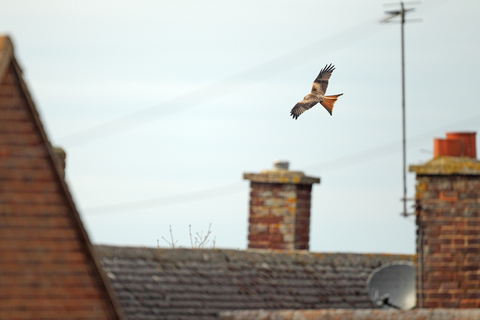Swift and wild: How to build houses and restore nature together calls for a strategic approach towards housebuilding as part of achieving environmental targets, including net-zero and protecting 30% of land for nature by 2030. The report highlights the importance of improving energy efficiency and access to nature during the housebuilding process.
The UK Government has pledged to build 1.5 million homes over the next five years. It recently announced a consultation to revise planning policy in England to deliver more affordable, well-designed homes quickly, grow the economy and support green energy.
The Wildlife Trusts’ report identifies various approaches to development that can have positive impacts for nature, climate and communities. They include community energy schemes, urban habitat creation, sustainable drainage systems, wildlife-friendly lighting and local food growing opportunities. The Wildlife Trusts want developers to learn from each other to deliver affordable, efficient and nature-friendly housing.
Swift and wild: How to build houses and restore nature together calls for:
- Strategic and nature-centric planning: The UK needs a strategic and joined-up approach to housebuilding that complements nature recovery and balances competing demands on land. The planning system should always avoid causing harm to legally protected areas, such as Sites of Special Scientific Interest and Special Areas of Conservation. A new land designation, Wildbelt, would put nature at the heart of the planning process by protecting land of low biodiversity value specifically for nature recovery. Wildbelt would also support local authorities to implement statutory biodiversity duties and deliver Local Nature Recovery Strategies.
- Climate action through development: Buildings are one of the UK’s largest sources of carbon emissions. Improving energy efficiency by retrofitting homes and embedding features like solar panels, rainwater harvesting, and green roofs can reduce emissions and bills, while benefitting health, well-being and wildlife. Implementing some of these changes widely could help the UK achieve net-zero. Inexpensive, small-scale changes – such as including swift bricks in new developments – can support nature recovery and contribute to wildlife corridors.
- Nature-rich neighbourhoods: Integrating nature into new developments provides multiple health, social and environmental benefits. These include health and well-being impacts for people, reduced air pollution and better protection from flooding. Evidence shows that people with better access to nature are more active, mentally resilient and have better all-round health. New developments should help to connect nature reserves and other important areas for wildlife and ensure that everyone can access greenspace within 15 minutes’ walk or wheel.



